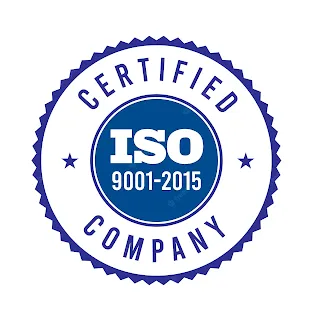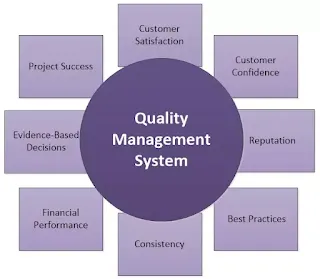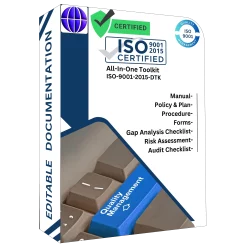ISO 9001:2015 Quality management systems — Requirements
ISO 9001:2015 is an internationally recognized standard for quality management systems. It provides a framework that organizations can follow to establish, implement, maintain, and continually improve their quality management systems. This standard sets the criteria for organizations to demonstrate their ability to consistently provide products and services that meet customer requirements and comply with applicable regulations.
Certification of Organizations
Organizations can choose to undergo certification to ISO 9001:2015 to validate their compliance with the standard. Certification is a formal process carried out by independent certification bodies that assess an organization’s quality management system against the requirements of ISO 9001:2015.
Once certified, organizations can display the ISO 9001 certification mark, which enhances their reputation and instills confidence in customers and stakeholders.
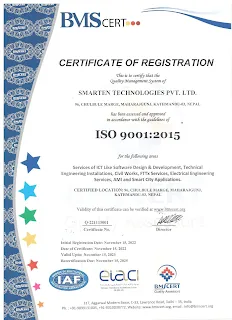
ISO 9000 vs. ISO 9001: Understanding the Difference
-
ISO 9000: The Foundation
- ISO 9000 is like the ‘umbrella’ of the ISO 9000 series.
- It sets out the basic vocabulary and fundamental concepts of quality management.
- Think of it as the essential guidebook for understanding the language of quality management systems.
-
ISO 9001: The Actionable Standard
- ISO 9001 is the most widely known and implemented standard within the family.
- It lists specific requirements a company must meet to have a certifiable quality management system (QMS).
- Companies get “ISO 9001 certified” to demonstrate their commitment to meeting customer needs and ensuring consistent quality.
-
Going Beyond: ISO 9004 and ISO 19011
- ISO 9004: Provides guidance on improving an organization’s overall performance and achieving long-term success, aligned with the principles of ISO 9001.
- ISO 19011: Offers guidelines for auditing management systems, ensuring that organizations can effectively verify (internally or externally) if their systems meet standards.
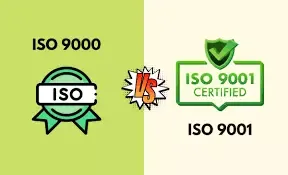
What is ISO 9001:2008?
- The Old Standard: ISO 9001:2008 was a version of the globally recognized quality management system standard. Companies could be certified to this to show their processes met certain quality criteria.
- Updated and Replaced: ISO standards get updated to reflect changes in best practices. ISO 9001:2008 was superseded by ISO 9001:2015, offering a more streamlined and modernized framework.
- No Longer Active: Companies previously certified to ISO 9001:2008 had a transition period to upgrade their systems to comply with the 2015 version. Any company still claiming ISO 9001:2008 certification is not operating to the current standard.
Why does this matter?
- Staying Current: ISO certifications demonstrate a commitment to quality. Working with a company claiming an outdated ISO certification could mean their processes aren’t aligned with the most up-to-date best practices.
- Tender Requirements: Sometimes, tenders or contracts specify working with companies that hold ISO 9001 certification – this usually refers to the current version (ISO 9001:2015).
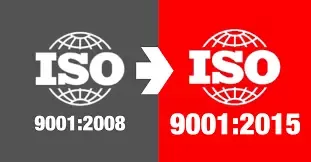
What is ISO 9001 and Other Standards?
ISO 9001 is a specific standard within the ISO 9000 family. It focuses on the requirements an organization must meet to achieve certification for its quality management system.
Other standards within the ISO 9000 family, such as ISO 9000 and ISO 9004, provide additional guidance and information to support organizations in implementing effective quality management practices and achieving sustained success.
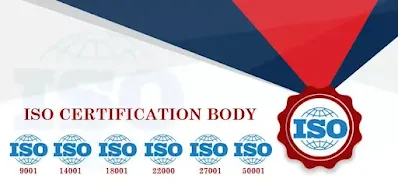
What is the Purpose of ISO 9001?
The purpose of ISO 9001 is to empower organizations to build quality-driven systems that consistently deliver customer satisfaction and fuel continuous improvement. It provides a structured framework to manage processes, pinpoint risks and opportunities, and guarantee compliance with relevant regulations. Ultimately, ISO 9001 helps streamline operations, boosting efficiency and effectiveness across the entire organization.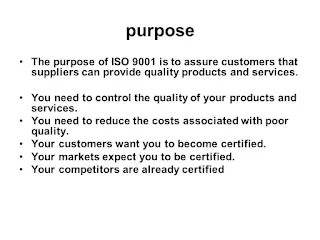
Why is ISO 9001 Important?
ISO 9001 is important because it unlocks tangible business benefits. The standard helps organizations increase customer satisfaction, streamline internal processes, and reduce waste, leading to significant cost savings. Furthermore, ISO 9001 certification enhances a company’s reputation, making it a desirable partner for both customers and investors. Perhaps most importantly, it establishes a framework for ongoing improvement, ensuring the business remains competitive and adaptable.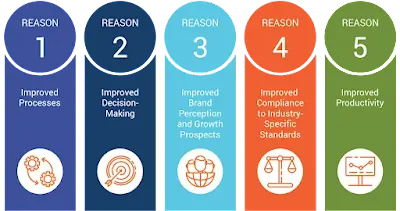
What are the ISO 9001 Requirements?
ISO 9001:2015 sets out several key requirements that organizations must fulfill to achieve certification. These requirements include:
- Establishing a quality management system.
- Identifying the context of the organization and understanding the needs and expectations of interested parties.
- Defining the scope of the quality management system.
- Planning and controlling organizational processes to ensure product/service conformity.
- Managing resources effectively, including human resources, infrastructure, and environment.
- Monitoring and measuring performance through the use of performance indicators and audits.
- Continual improvement of the quality management system.
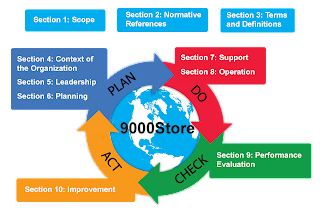
How is ISO 9001 Implemented?
Implementing ISO 9001 involves several steps:
- Obtain management support: Top management must demonstrate commitment to implementing and maintaining the quality management system.
- Conduct a gap analysis: Evaluate the existing processes and practices against the requirements of ISO 9001 to identify areas that need improvement.
- Develop an implementation plan: Create a roadmap outlining the activities, responsibilities, and timelines for implementing the quality management system.
- Define processes and procedures: Document the processes and procedures necessary to meet the ISO 9001 requirements and ensure consistency and standardization.
- Train employees: Provide training and awareness programs to ensure employees understand their roles and responsibilities in implementing the quality management system.
- Implement the system: Roll out the documented processes and procedures, making necessary adjustments based on feedback and performance indicators.
- Monitor and measure performance: Establish performance indicators and conduct regular audits to monitor the effectiveness of the quality management system.
- Continually improve: Act on the findings from audits, customer feedback, and performance indicators to drive continual improvement in the quality management system.

How do I Get ISO 9001 Certified?
To get ISO 9001 certified, organizations need to follow these general steps:
- Prepare for certification: Implement the ISO 9001 requirements and ensure the quality management system is fully operational.
- Select a certification body: Choose an accredited certification body to conduct the certification audit.
- Stage 1 audit: The certification body performs an initial audit to evaluate the organization’s readiness for the certification process. This audit assesses the documentation and implementation of the quality management system.
- Stage 2 audit: The certification body conducts a more comprehensive audit to verify the effectiveness and conformity of the quality management system. This audit involves evaluating processes, records, and interviews with personnel.
- Certification decision: Based on the findings from the stage 2 audit, the certification body decides whether to grant ISO 9001 certification. If successful, the organization receives a certificate valid for a specific period, usually three years.
- Surveillance audits: To maintain certification, the organization undergoes regular surveillance audits conducted by the certification body to ensure ongoing compliance with ISO 9001.
By following these steps, organizations can obtain ISO 9001 certification and demonstrate their commitment to quality management and continual improvement.

Steps for a Company to Get ISO 9001 Certified:
Step 1: Management Commitment and Preparation
- Obtain commitment from top management to implement ISO 9001.
- Assign a management representative responsible for overseeing the certification process.
- Establish a project team and allocate necessary resources.
Step 2: Gap Analysis
- Conduct a thorough review of the current quality management system against the requirements of ISO 9001.
- Identify areas that need improvement and develop an action plan.
Step 3: Documentation Development
- Develop a quality manual that outlines the scope and objectives of the quality management system.
- Create documented procedures and work instructions to support the implementation of ISO 9001 requirements.
- Ensure documentation is easily accessible and regularly updated.
Step 4: Implementation and Training
- Roll out the quality management system throughout the organization.
- Provide training to employees on ISO 9001 requirements, procedures, and their roles within the system.
- Implement necessary changes identified in the gap analysis.
Step 5: Internal Audit
- Conduct internal audits to assess the effectiveness and compliance of the quality management system.
- Identify non-conformities and areas for improvement.
- Take corrective actions to address any issues found during the audit.
Step 6: Management Review
- Hold regular management reviews to evaluate the performance of the quality management system.
- Review key metrics, customer feedback, audit results, and improvement opportunities.
- Make necessary adjustments to improve the effectiveness of the system.
Step 7: Certification Audit
- Select an accredited certification body to conduct the certification audit.
- The certification audit typically consists of a stage 1 audit (document review) and a stage 2 audit (on-site assessment).
- The certification body will assess the organization’s compliance with ISO 9001 requirements and determine if certification is granted.

Step 8: Continual Improvement
- Maintain the quality management system and continually improve its effectiveness.
- Monitor performance indicators, customer feedback, and internal audits to identify opportunities for improvement.
- Implement corrective and preventive actions to address non-conformities and enhance the system.
What is the Current ISO 9001 Standard?
The current ISO 9001 standard is ISO 9001:2015. It replaced the previous version, ISO 9001:2008, and introduced several changes to enhance the focus on risk-based thinking, leadership, and integration with other management systems. ISO 9001:2015 follows the high-level structure (HLS) framework defined by ISO, making it easier for organizations to integrate multiple management systems.
What is a Quality Management System?
A Quality Management System (QMS) is a set of interrelated processes and procedures that an organization establishes to achieve its quality objectives. It provides a framework to plan, execute, monitor, and improve processes, ensuring that products and services consistently meet customer requirements and comply with applicable regulations. A QMS encompasses organizational structure, responsibilities, procedures, processes, and resources needed to implement quality management principles effectively.
What is QMS Certification?
QMS certification, also known as ISO 9001 certification, is a formal recognition that an organization’s quality management system conforms to the requirements of ISO 9001:2015. Certification is typically conducted by accredited certification bodies that assess the organization’s compliance through a series of audits. Achieving QMS certification demonstrates an organization’s commitment to quality management and can enhance its reputation and credibility.
Quality Management – The Business Benefits:
Implementing a robust quality management system and achieving ISO 9001 certification can bring several benefits to a business, including:
- Improved customer satisfaction: By consistently delivering products and services that meet customer requirements, organizations can enhance customer satisfaction, loyalty, and retention.
- Enhanced operational efficiency: A well-defined QMS helps streamline processes, reduce waste, and improve efficiency, leading to cost savings and increased productivity.
- Increased competitiveness: ISO 9001 certification can give organizations a competitive edge by demonstrating their commitment to quality and differentiating them from competitors.

- Compliance with regulations: ISO 9001 helps organizations ensure compliance with applicable laws, regulations, and industry standards, reducing the risk of legal and regulatory issues.
- Continual improvement: The focus on continual improvement in ISO 9001 encourages organizations to identify areas for enhancement, leading to innovation, increased effectiveness, and better business outcomes.
Quality Management Principles:
ISO 9001 is based on a set of quality management principles that guide organizations in achieving their quality objectives. These principles include:
- Customer focus: Understanding and meeting customer requirements to enhance customer satisfaction.
- Leadership: Establishing a clear vision, direction, and commitment from top management.
- Engagement of people: Involving and empowering employees at all levels to contribute to the organization’s success.

- Process approach: Managing activities as processes to achieve desired outcomes efficiently.
- Improvement: Continually improving performance through a focus on innovation, learning, and adaptation.
- Evidence-based decision making: Making informed decisions based on data and information analysis.
- Relationship management: Building mutually beneficial relationships with customers, suppliers, and other stakeholders.
What is ISO 9001 – Quality Management Systems?
ISO 9001 is an international standard that specifies the requirements for a quality management system. It provides a framework for organizations to establish processes and procedures to consistently deliver products and services that meet customer requirements and enhance customer satisfaction. ISO 9001 emphasizes a process-based approach, risk-based thinking, and a focus on continual improvement. It is applicable to organizations of all sizes and across various industries.
ISO 9001 Requirements for Quality Management System:
ISO 9001:2015 outlines several key requirements for a quality management system, including:
- Context of the organization: Understanding the organization’s internal and external context, including interested parties and their requirements.
- Leadership: Demonstrating leadership commitment, establishing a quality policy, and defining roles and responsibilities.
- Planning: Setting quality objectives, planning actions to achieve them, and addressing risks and opportunities.
- Support: Providing resources, competency development, infrastructure, and support for the quality management system.
- Operation: Planning and controlling processes to meet customer requirements, including product/service design, production, and service delivery.
- Performance evaluation: Monitoring, measuring, analyzing, and evaluating the performance of the quality management system.
- Improvement: Taking actions to address non-conformities, enhance performance, and promote continual improvement.
Implementation of a QMS with IMS2 Methodology:
IMS2 (Integrated Management System Squared) is a methodology for implementing a Quality Management System (QMS) that integrates multiple management systems, such as quality, environmental, health and safety, and information security. The IMS2 methodology involves the following steps:
- Define scope and objectives: Identify the scope and boundaries of the integrated management system and set clear objectives.
- Assess existing systems: Evaluate the requirements and processes of each individual management system to identify areas of overlap and synergy.
- Develop an integrated framework: Create a framework that combines the common elements of the individual management systems, streamlining processes and documentation.
- Document procedures and processes: Develop integrated procedures and processes that address the requirements of all applicable management systems.
- Implementation and training: Roll out the integrated management system across the organization, providing training to employees on the new processes and requirements.
- Monitoring and evaluation: Monitor the performance of the integrated management system, conduct internal audits, and measure key performance indicators.
- Continuous improvement: Continually review and improve the integrated management system by addressing non-conformities, identifying improvement opportunities, and involving employees in the process.
Risk-Based Approach:
ISO 9001:2015 emphasizes a risk-based approach to quality management. This approach requires organizations to identify and address risks and opportunities that may affect their ability to achieve quality objectives. By analyzing risks and taking appropriate actions, organizations can prevent or mitigate potential negative impacts on product/service quality, customer satisfaction, and overall business performance. The risk-based approach helps organizations make informed decisions, allocate resources effectively, and drive continual improvement.
What is the purpose of ISO 9001?
The purpose of ISO 9001 is to provide organizations with a systematic approach to quality management. It aims to help organizations enhance customer satisfaction by consistently delivering products and services that meet customer requirements. ISO 9001 provides a framework for organizations to establish and improve their quality management systems, identify and address risks and opportunities, and drive continual improvement. The standard helps organizations become more efficient, improve processes, and gain a competitive edge in the market.
What are the main core concepts in ISO 9001?
The main core concepts in ISO 9001 include:
- Customer Focus: Organizations should understand and meet customer requirements to enhance customer satisfaction.
- Leadership: Top management plays a crucial role in establishing a vision, setting objectives, and providing leadership and resources for the quality management system.
- Engagement of People: Involving and empowering employees at all levels to contribute to the effectiveness of the quality management system.
- Process Approach: Managing activities and resources as interrelated processes to achieve desired outcomes effectively.
- Improvement: Continual improvement is essential for enhancing performance, efficiency, and customer satisfaction.
- Evidence-based Decision Making: Making informed decisions based on data, information, and analysis.
- Relationship Management: Building and managing relationships with interested parties, including customers, suppliers, and other stakeholders, to achieve mutual benefits.
How is ISO 9001 implemented?
Implementing ISO 9001 involves several key steps:
- Obtain Management Support: Gain commitment from top management to implement ISO 9001 and allocate necessary resources.
- Conduct a Gap Analysis: Evaluate the organization’s existing processes and practices against the requirements of ISO 9001 to identify areas for improvement.
- Develop a Quality Management System: Create or update documented processes, procedures, and controls to align with ISO 9001 requirements.
- Train Employees: Provide training and awareness programs to ensure employees understand their roles, responsibilities, and the requirements of ISO 9001.
- Implement the System: Roll out the quality management system across the organization, ensuring the effective implementation of documented processes and controls.
- Monitor and Measure Performance: Establish performance indicators, conduct internal audits, and monitor the performance of the quality management system.
- Continual Improvement: Act on findings from audits, customer feedback, and performance indicators to drive continual improvement in the quality management system.
It is important to note that the implementation process may vary based on the organization’s size, complexity, and existing quality management practices. Organizations may also seek the assistance of consultants or experts to facilitate the implementation process effectively.
How to apply ISO 9001?
To apply for ISO 9001 certification with Quality Management System Nepal Pvt. Ltd., you need to follow these general steps:
- Understand ISO 9001 requirements: Familiarize yourself with the ISO 9001 standard and its clauses.
- Perform a gap analysis: Evaluate your current processes and systems against ISO 9001 requirements to identify gaps.
- Develop an implementation plan: Create a roadmap to address the gaps and implement ISO 9001 requirements.
- Implement changes: Make necessary adjustments to your processes and systems to align with ISO 9001.
- Internal audit: Conduct internal audits to ensure compliance with the standard.
- Management review: Engage top management in reviewing the implementation and its effectiveness.
- External audit: Choose an accredited certification body like Quality Management System Nepal Pvt. Ltd. for the final certification audit.
- Certification: If your organization meets the requirements, you will be awarded ISO 9001 certification.
How to get ISO 9001 certification in Nepal?
To obtain ISO 9001 certification in Nepal:
- Develop a quality management system in line with ISO 9001 requirements.
- Train your employees on quality management principles.
- Implement the quality management system in your organization.
- Perform internal audits to ensure compliance.
- Contact Quality Management System Nepal Pvt. Ltd. for an ISO 9001 audit.
- Upon successful evaluation, receive ISO 9001 certification.
How to get ISO Certificate in Nepal?
Getting an ISO Certificate in Nepal involves the following steps:
- Choose the specific ISO standard relevant to your business.
- Prepare and implement processes aligned with the chosen ISO standard.
- Conduct internal audits to verify compliance.
- Select Quality Management System Nepal Pvt. Ltd. as your certification body.
- Arrange an audit with the certification body.
- Upon successful assessment, receive your ISO certificate.
Conclusion:
ISO 9001:2015 stands as a testament to the global emphasis on quality management and the pursuit of excellence in organizational processes. The standard embodies the modern understanding that quality isn’t merely about end-product compliance but involves a holistic approach encompassing leadership, planning, support, and continuous improvement. By integrating the principles of ISO 9001:2015, organizations not only lay down a foundation for consistently meeting customer and regulatory requirements but also champion a culture of continuous betterment. This is a dynamic standard that encourages companies to introspect, innovate, and evolve, ensuring that they remain resilient, competitive, and relevant in the face of changing market landscapes.
Frequently Asked Questions:
What is ISO 9001?
ISO 9001 is an international standard for Quality Management Systems (QMS). It provides a framework that organizations can follow to ensure consistent delivery of products and services that meet customer requirements and enhance customer satisfaction.
What is the Difference between ISO 9000 and ISO 9001?
ISO 9000 refers to a family of standards that includes ISO 9001, ISO 9004, and other related documents. ISO 9001 is a specific standard within the ISO 9000 family that lays out the requirements for a Quality Management System. In short, ISO 9001 is the standard that an organization can be certified against, while ISO 9000 refers to the broader set of quality management standards.
What does ISO 9001 stand for?
ISO 9001 stands for “International Organization for Standardization 9001.” It is the specific standard within the ISO 9000 family that sets out the criteria for a Quality Management System.
What is ISO 9001 certification?
ISO 9001 certification is a formal recognition by an accredited certification body that an organization’s Quality Management System complies with the requirements of ISO 9001. It demonstrates an organization’s commitment to delivering consistent, high-quality products, and products, and services.
What is ISO 9001:2015?
ISO 9001:2015 is the latest version of the ISO 9001 standard, which was released in September 2015. It replaced the previous version, ISO 9001:2008. ISO 9001:2015 follows the High-Level Structure (HLS) to ensure compatibility with other management system standards.
What is ISO 9001:2008?
ISO 9001:2008 was the previous version of the ISO 9001 standard. It was replaced by ISO 9001:2015 and has since been outdated. Organizations that were certified under ISO 9001:2008 were required to transition to the new version.
What is ISO 9001 standard?
The ISO 9001 standard is a set of requirements for implementing a Quality Management System (QMS) within an organization. It outlines a systematic approach to managing processes, enhancing customer satisfaction, and continually improving the effectiveness of the organization.
How to begin ISO 9001:2015?
To begin implementing ISO 9001:2015, follow these initial steps:
- Obtain a copy of the ISO 9001:2015 standard.
- Familiarize yourself with the requirements and understand the clauses.
- Conduct a gap analysis to identify areas where your current processes do not meet the standard’s requirements.
- Develop an implementation plan and engage key stakeholders in the process.
- Start making necessary changes to align your processes with ISO 9001:2015.
- Train employees to create awareness and understanding of the QMS requirements.
- Set up internal audits and management reviews to assess the progress and effectiveness of the implementation.
Difference between ISO 9001 and ISO 22000?
ISO 9001 and ISO 22000 are two different standards serving distinct purposes. ISO 9001 is focused on general Quality Management Systems applicable to any industry, emphasizing customer satisfaction and continual improvement. On the other hand, ISO 22000 is specifically designed for Food Safety Management Systems, ensuring safe food production, handling, and supply throughout the food chain.
Where do I start ISO 9001:2015?
To begin implementing ISO 9001:2015, follow the steps mentioned above in “How to begin ISO 9001:2015” to get started on the process of aligning your organization’s processes with the standard’s requirements.
How to get ISO Certification in Nepal?
Quality Management System Nepal Pvt. Ltd. provides a streamlined process to obtain ISO certification in Nepal. Follow these steps:
- Identify the relevant ISO standard for your industry.
- Implement the necessary processes and systems to meet the standard requirements.
- Conduct internal audits to assess compliance.
- Choose a reputable certification body like Quality Management System Nepal Pvt. Ltd.
- Schedule an audit by the certification body.
- After successful assessment, receive your ISO certification.
How to get ISO 9001 certification in Nepal?
To obtain ISO 9001 certification in Nepal:
- Develop a quality management system in line with ISO 9001 requirements.
- Train your employees on quality management principles.
- Implement the quality management system in your organization.
- Perform internal audits to ensure compliance.
- Contact Quality Management System Nepal Pvt. Ltd. for an ISO 9001 audit.
- Upon successful evaluation, receive ISO 9001 certification.
How to get ISO Certificate in Nepal?
Getting an ISO Certificate in Nepal involves the following steps:
- Choose the specific ISO standard relevant to your business.
- Prepare and implement processes aligned with the chosen ISO standard.
- Conduct internal audits to verify compliance.
- Select Quality Management System Nepal Pvt. Ltd. as your certification body.
- Arrange an audit with the certification body.
- Upon successful assessment, receive your ISO certificate.
order to maintain a seamless and efficient ISO certification process, partnering with a trusted ISO consultant is crucial. At Quality Management System Nepal Pvt. Ltd., we are committed to providing your organization with expert guidance and support, ensuring a cost-effective and successful ISO implementation journey. As the leading ISO System Certification body in Nepal, we offer a comprehensive range of certification services tailored to your organization’s needs.
Explore our range of ISO certification services:
- ISO 55001 Certification in Nepal: Enhance asset management and energy efficiency.
- TL 9000 Certification in Nepal: Elevate quality standards in the telecommunications industry.
- IATF 16949 Certification in Nepal: Elevate automotive quality and meet industry requirements.
- ISO 37001 Certification in Nepal: Strengthen anti-bribery management systems.
- AS 9001 Certification in Nepal: Attain aerospace quality standards for excellence.
- ISO FSSC 22000 Certification in Nepal: Ensure safe and quality food production.
- ISO 29990 Certification in Nepal: Elevate training and learning services.
- ISO SA 8000 Certification in Nepal: Prioritize social accountability and ethical practices.
- ISO 27017 Certification in Nepal: Ensure secure cloud computing environments.
- ISO 20000-1:2018 Certification in Nepal: Elevate IT service management systems.
- ISO 22301 Certification in Nepal: Enhance business continuity and resilience.
- ISO 41001 Certification in Nepal: Optimize facility management systems.
- HACCP Certification in Nepal: Ensure food safety and hazard analysis.
- ISO 50001 Certification in Nepal: Enhance energy management and efficiency.
- ISO 13485 Certification in Nepal: Elevate medical device quality standards.
- Good Manufacturing Practice (GMP) Certification in Nepal: Ensure quality and compliance in manufacturing.
- ISO 9001 Certification in Nepal: Elevate overall quality management.
- ISO 15189:2022 Certification for Medical Laboratories in Nepal: Elevate medical laboratory practices.
- ISO 17025 Certification for Testing and Calibration Laboratories in Nepal: Ensure accurate testing and calibration.
- ISO 27001:2022 Certification for Information Security in Nepal: Enhance information security practices.
- ISO 22000 Certification for Food Safety Management System in Nepal: Ensure safe and quality food production.
- ISO 45001:2018 Certification for Occupational Health and Safety in Nepal: Elevate health and safety standards.
- ISO 14001:2015 Certification for Environmental Management in Nepal: Enhance environmental sustainability.
Our dedicated team is ready to provide your organization with customized solutions and expert assistance. If you have any queries or are ready to embark on your ISO certification journey, feel free to contact us at 9840525565 for a free consultation on our ISO certification services. Trust Quality Management System Nepal Pvt. Ltd. to be your partner in achieving excellence and compliance.
Tags

